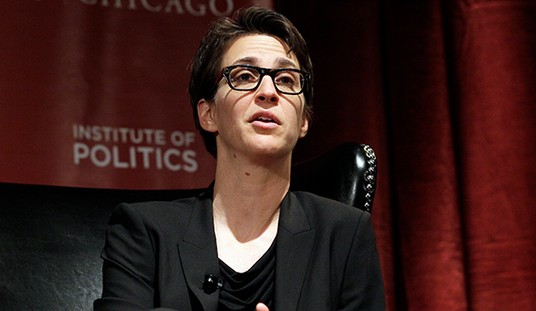The last time we checked in on the debate over intersex Olympic athlete Caster Semenya and her competition status, a Swiss court had ordered the International Association of Athletics Federations (IAAF) to suspend their rules requiring intersex or biologically male transgender athletes to suppress their testosterone levels if they wanted to compete against women. That was considered a victory for Semenya by many activists, but it troubled many world-class athletes who feared that the unfair advantage would undermine women’s sports.
Now the IAAF has concluded yet another investigation and issued a finding that may wind up ditching the court ruling. This week they declared that Semenya is “biologically male.” (Associated Press)
The governing body of track argued that Caster Semenya is “biologically male” and that is the reason she should reduce her natural testosterone to be allowed to compete in female competitions, according to documents released publicly by sport’s highest court for the first time on Tuesday.
The IAAF’s stance on Semenya and other female athletes affected by its new testosterone regulations was revealed in a 163-page decision from the Switzerland-based Court of Arbitration for Sport, where the South African runner took on the IAAF over its highly contentious hormone rules in a closed-doors five-day hearing in February. CAS released only excerpts of the final decision when it was announced last month.
Tuesday’s fuller court records, which were still partially redacted, show the IAAF referred to the two-time Olympic 800-meter champion as one of a number of “biologically male athletes with female gender identities.”
This was already a troubling and intensely complicated situation and this new finding really doesn’t seem to be helpful in the larger scheme of things. First of all, Semenya is not transgender, as in being a man who decides to “identify” as a woman and compete against actual women in sports. She was listed as a female at birth and has lived her entire life as a girl/woman. But Semenya is intersex, having a complicated XY chromosomal structure and at least some of the physical attributes of a male as well, leading to her heightened testosterone levels. Calling her a male because of something that was no fault of her own seems both offensive and counterproductive.
This finding also does nothing to move the ball down the field in terms of finalizing the rules for both transgender athletes and intersex competitors like Semenya. The fact is that they have both higher testosterone levels and generally greater muscle mass, bone density, and all of the other competitive advantages that men typically enjoy. How do we balance the career goals of someone like Caster Semenya against the missed opportunities of top female athletes who may not be able to overcome those advantages but who might otherwise have made it to the top of their fields were they only competing against other women? The search for that answer continues.
As a side note, I wanted to point you to a new development in a related story. You probably recall the case of the two male transgender athletes in Connecticut who have been breaking track and field records while competing against girls for the past two years. One of the girls who wound up being bumped out of the regional tournament (and possibly her chance at a scholarship) by these two boys was Selina Soule. She’s already been a vocal critic of the unfairness of the situation, but now she’s being represented by the Alliance Defending Freedom in a bid to have the courts straighten out this mess. Read the details at The Federalist.








Join the conversation as a VIP Member